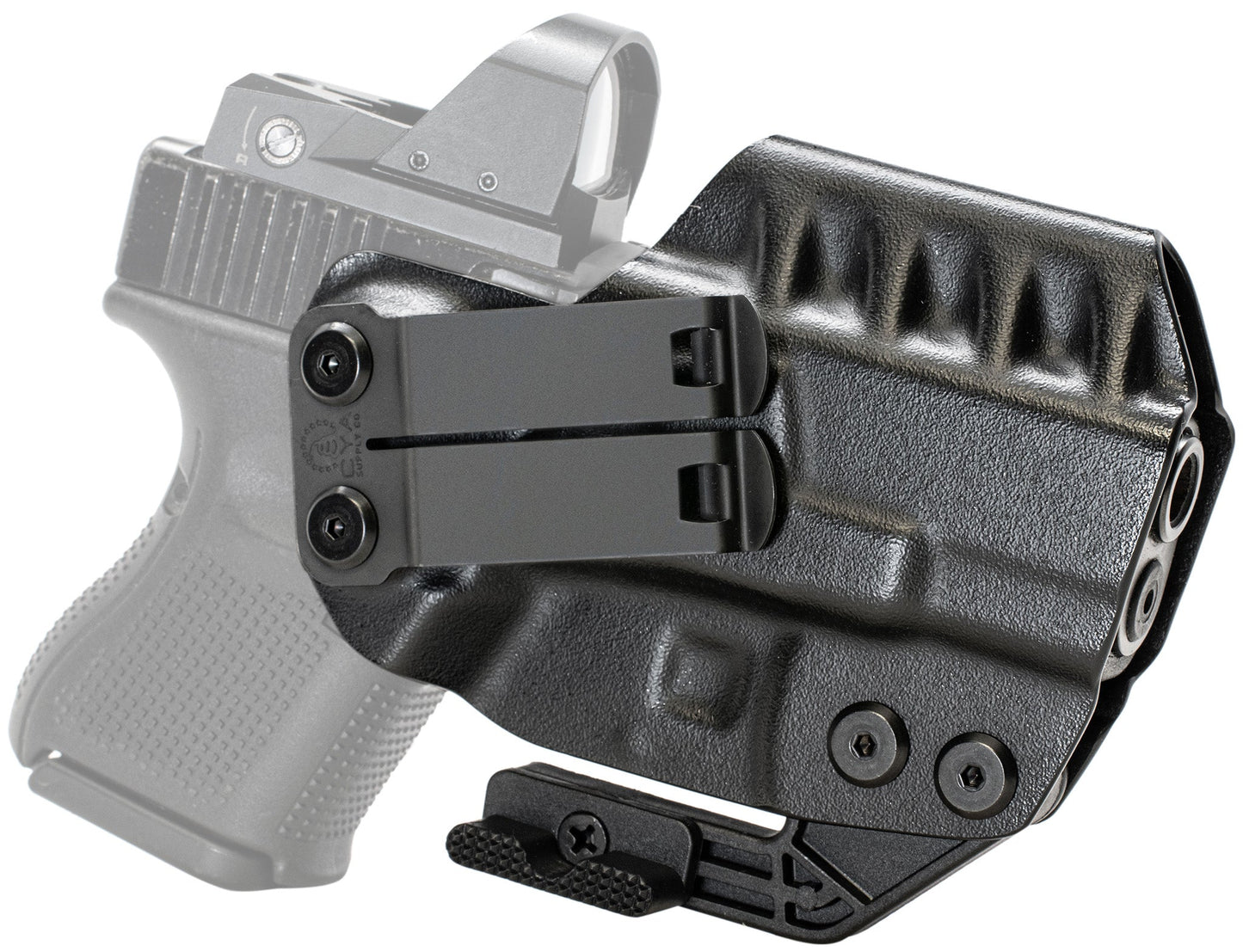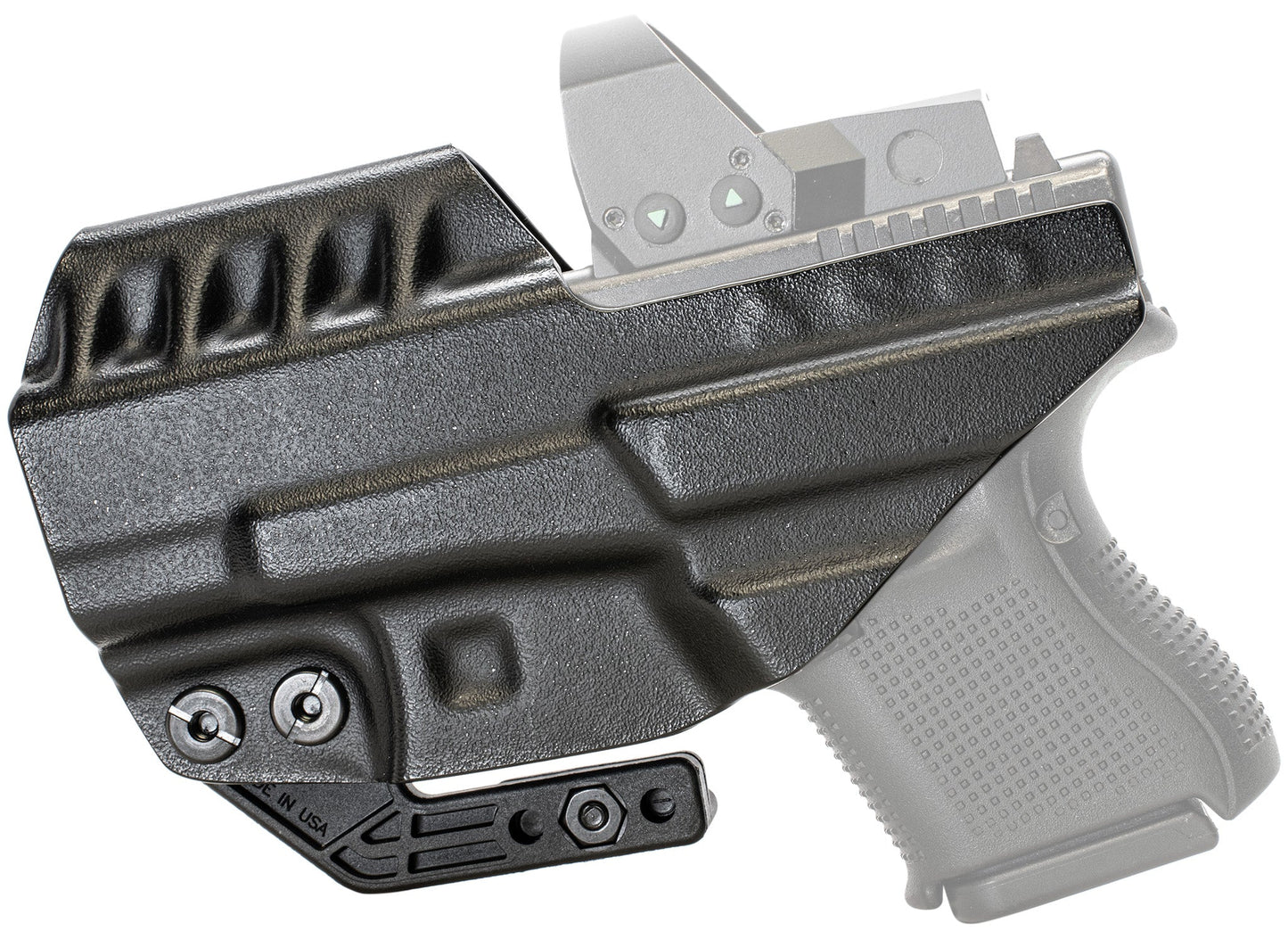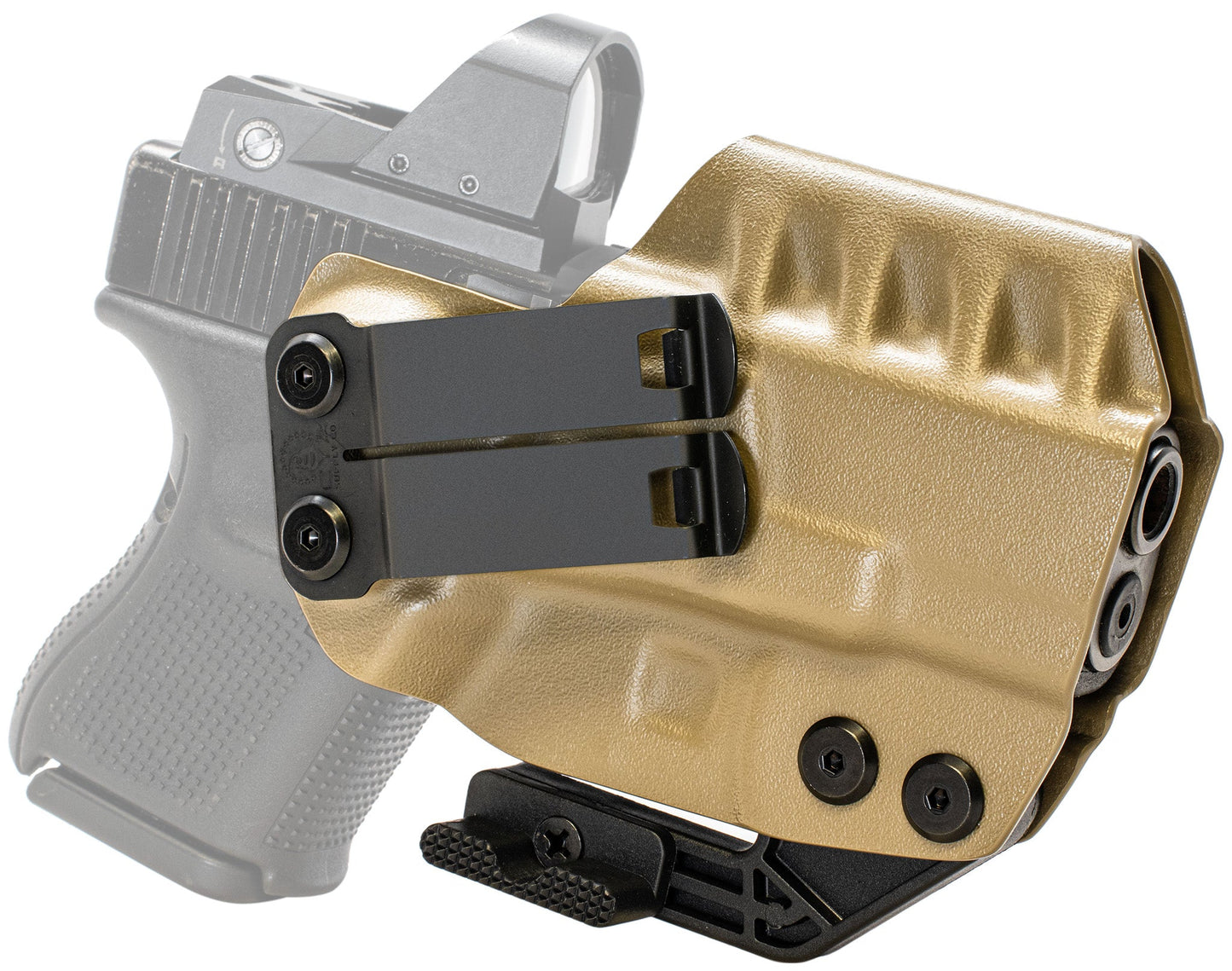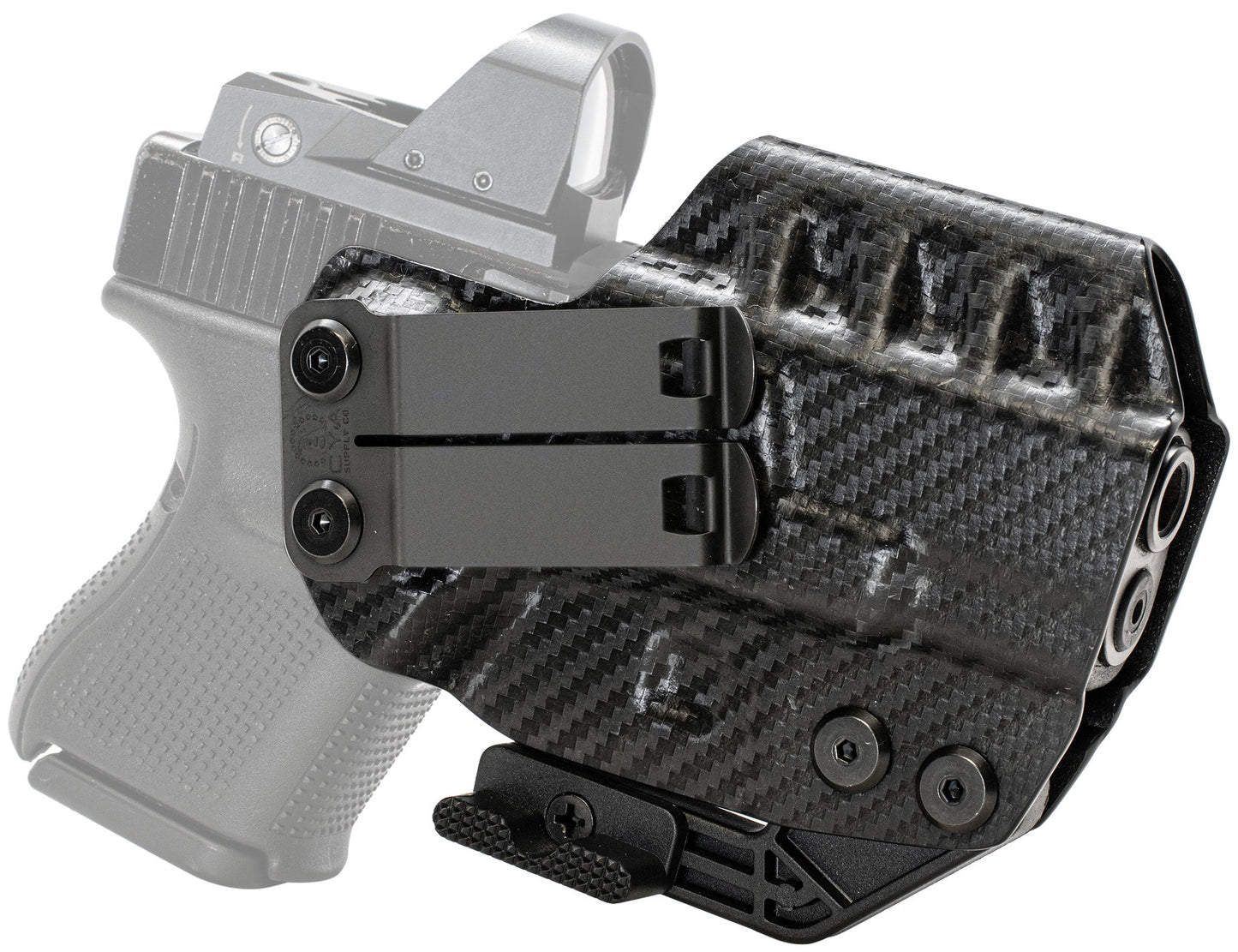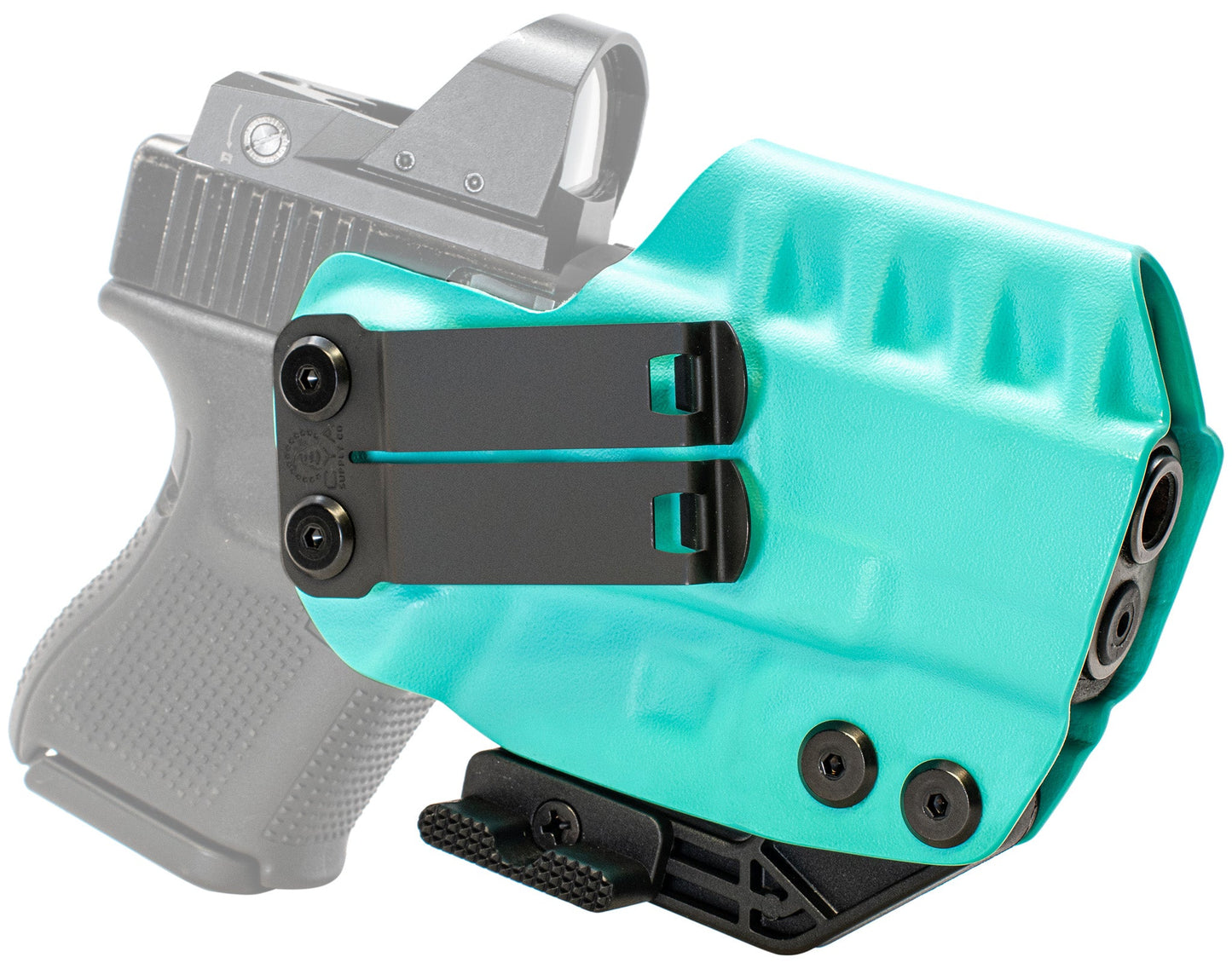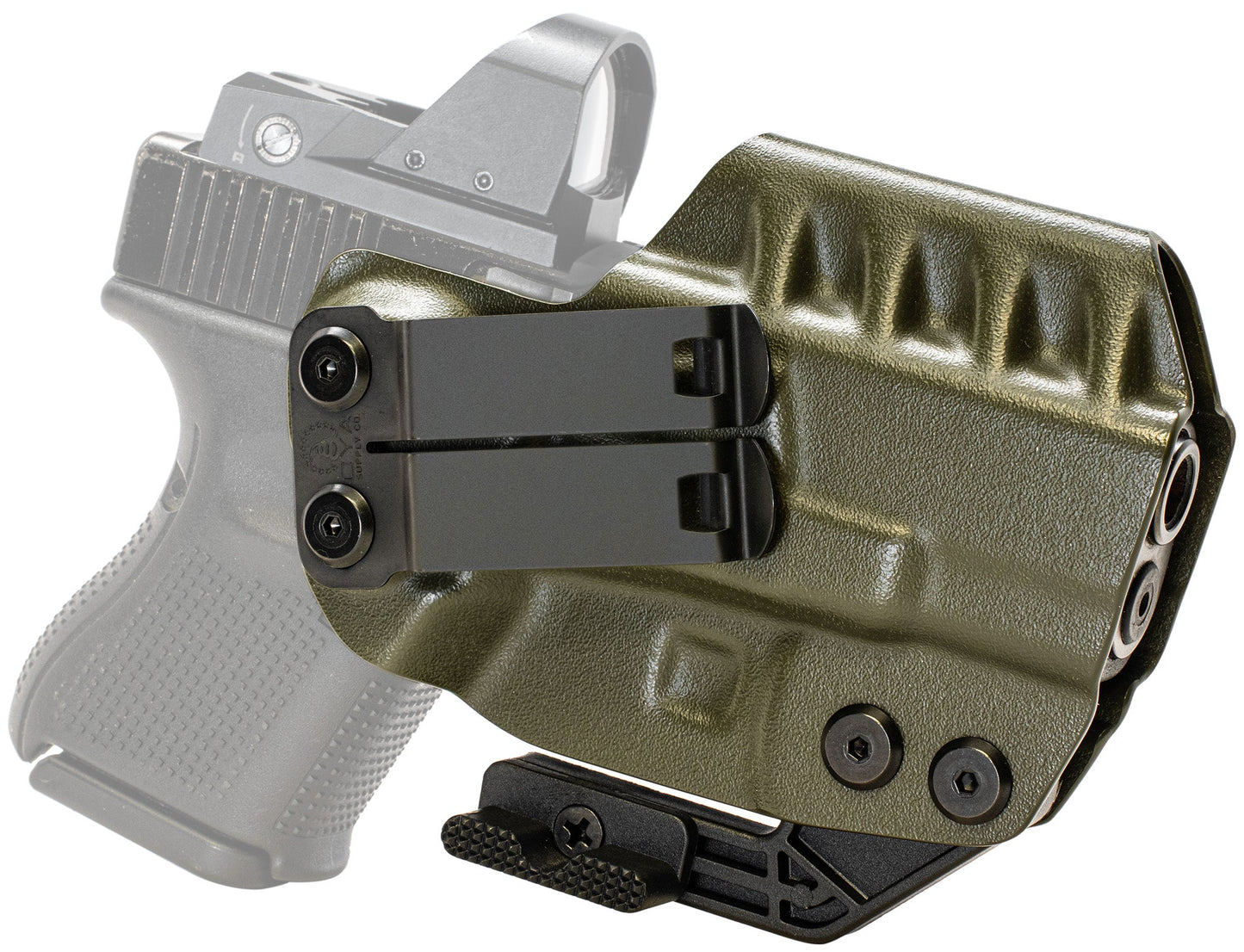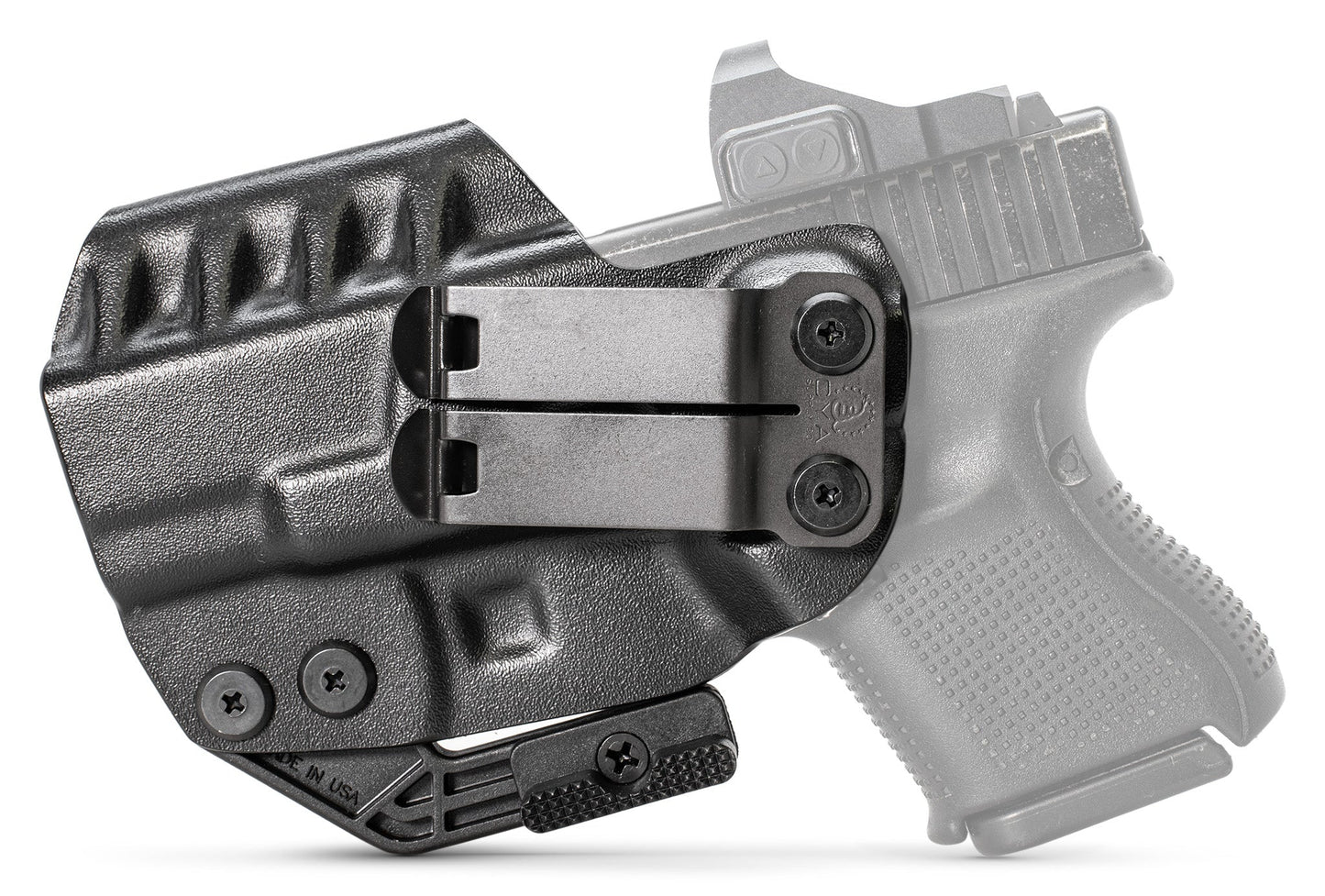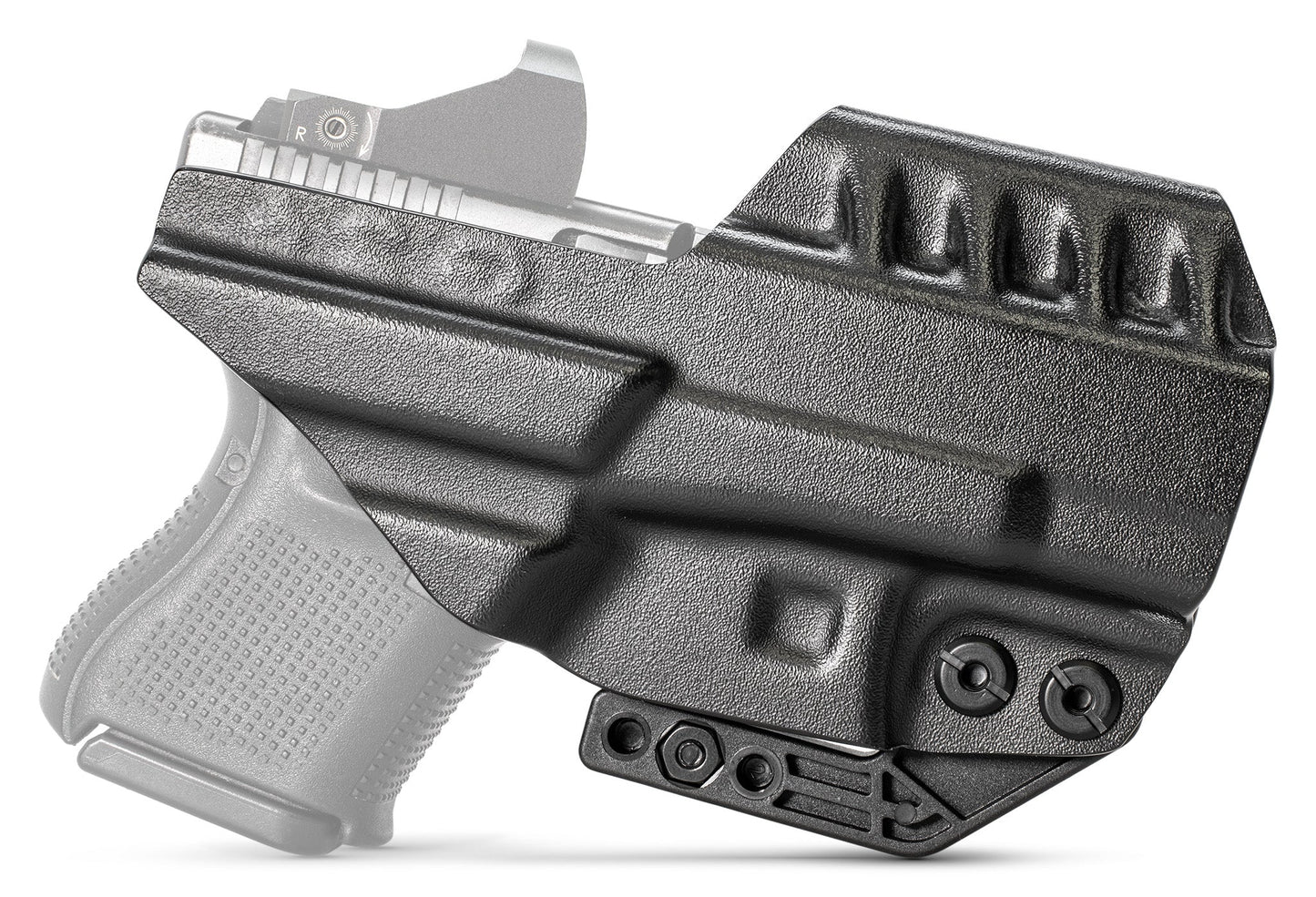Glock 26 vs 43: A Detailed Comparison for Concealed Carry
When choosing a subcompact 9mm pistol for concealed carry, deciding between the Glock 26 and the Glock 43 can be challenging. Both models offer reliable performance and are popular among gun enthusiasts. The Glock 26 has a higher magazine capacity and a slightly wider build, which provides a better grip, making it a preferred choice for many.
The Glock 43, on the other hand, is slimmer and lighter. This makes it easier to conceal, especially for those with smaller frames or who prefer less bulk. Comparing these two guns' sizes, weights, capacities, and other factors will help you decide which is more suitable for your needs.
Whether looking for better handling or more concealability, it's crucial to weigh these aspects carefully. Each gun has advantages, and understanding them will enhance your concealed carry experience.
Key Takeaways
- Glock 26 offers a higher magazine capacity.
- Glock 43 is slimmer and more accessible to conceal.
- Each model suits different preferences and needs for concealed carry.
Comparing Technical Specifications
The Glock 26 and Glock 43 are popular choices for concealed carry. They differ mainly in size, capacity, and handling.
Size and Concealability
The Glock 26 is slightly more significant due to its double-stack magazine. It has a width of 1.18 inches, a height of 4.17 inches, and a length of 6.41 inches. The Glock 43 is slimmer, with a width of 1.02 inches, a height of 4.25 inches, and a length of 6.26 inches. These size differences make the Glock 43 more suitable for deep concealment, particularly in pocket carry or inside-the-waistband (IWB) holsters.Check out the best Glock 26 Holster for concealed carry.
|
Model |
Width (in) |
Height (in) |
Length (in) |
|
Glock 26 |
1.18 |
4.17 |
6.41 |
|
Glock 43 |
1.02 |
4.25 |
6.26 |
Capacity and Caliber
Thanks to its double-stack design, the Glock 26 holds 10+1 rounds of 9mm ammunition in its standard magazine. It can also use extended magazines for increased capacity. Conversely, the Glock 43 has a single-stack magazine with 6+1 rounds of 9mm ammunition. This makes the Glock 43 lighter and more comfortable for extended carry, though some may prefer the higher ammunition capacity of the Glock 26 for self-defense scenarios.
|
Model |
Magazine Type |
Capacity (Standard) |
Capacity (Extended) |
|
Glock 26 |
Double Stack |
10+1 |
Up to 33 rounds |
|
Glock 43 |
Single Stack |
6+1 |
Up to 8 rounds |
Handling and Performance
Both models feature a polymer frame designed for reliable, everyday use. The Glock 26's weight and double-stack design result in less felt recoil, aiding accuracy during rapid shots. The Glock 43 is lighter, making it easier to carry, but it might have slightly more recoil. Both firearms have barrel lengths of around 3.39 inches, contributing to similar accuracy potential. The Glock 26's trigger pull is consistent, with a slight advantage in control during extended shooting sessions. At the same time, the Glock 43 offers a more streamlined trigger reach, which is beneficial for shooters with smaller hands.
- Trigger Pull: About 5.5 lbs for both models.
- Barrel Length: Approximately 3.39 inches for each.
Ergonomically, neither weapon is exceptionally comfortable due to its compact size, but both are manageable with practice. Despite the differences, the Glock 26 and Glock 43 deliver reliable performance in a compact, concealable package.
Practical Insights and Considerations
Understanding the Glock 26 and Glock 43 requires examining their applications in everyday carry, reliability, and maintenance and how personal preferences and context can influence a decision between these two compact pistols. Check out the best Glock 43x Holster for concealed carry.
Everyday Carry Applications
For those interested in concealment, the Glock 43’s slimmer profile makes it easier to carry discreetly. Its narrower grip and lighter weight suit people with smaller hands or who prefer less bulk.
On the other hand, the Glock 26 is slightly larger but offers a higher ammo capacity with its double-stack magazine. This makes it a strong contender for those prioritizing firepower in a compact frame. Both models are popular among concealed carriers due to their versatility in self-defense situations, but the decision will often come down to balancing concealment with firepower.
Reliability and Maintenance
The Glock 26 and Glock 43 are known for their reliability and ease of maintenance. Glock’s reputation for durable and dependable firearms holds validity for these models. They are designed to withstand the rigors of daily carry and usage.
Maintenance is straightforward due to Glock’s simple design, which allows users to disassemble and clean their pistols easily. Aftermarket support for both models is robust, with plenty of available parts and accessories, making it easy to replace worn-out components and customize the firearms to personal preferences.
Personal Preference and Context
Choosing between the Glock 26 and the Glock 43 often comes down to personal preference and specific application needs. Those who require a higher ammo capacity may lean towards the Glock 26, especially if they are in roles such as law enforcement, where additional rounds can be crucial.
Conversely, the Glock 43 might be preferred for its ease of concealment and comfort during extended wear, making it ideal for civilian concealed carry applications. Training and familiarity with the firearm are also crucial factors – experimenting with both models at a range can provide valuable insights into which model feels more natural and effective in hand.
In summary, both the Glock 26 and Glock 43 offer excellent features for varied needs, with the choice heavily influenced by individual priorities and contexts.
Frequently Asked Questions
This section addresses common questions about the differences between the Glock 26 and Glock 43, covering size, capacity, handling, and more.
What are the size differences between the Glock 26 and Glock 43?
The Glock 26 measures 6.41 inches long, 1.18 inches wide, and 4.17 inches high.
The Glock 43 is slightly shorter at 6.26 inches and features a narrower grip, making it slimmer than the Glock 26.
How does the capacity of the Glock 26 compare with the Glock 43?
The Glock 26 has a 10+1 round capacity due to its double-stack magazine.
The Glock 43, with its single-stack magazine, holds 6+1 rounds, offering less capacity but a slimmer profile.
What are the handling and performance differences between the Glock 26 and Glock 43 models?
The Glock 26 is heavier and provides more ammo capacity, which can affect handling during firing.
The Glock 43, being lighter and slimmer, is easier to handle for those with smaller hands, although both models may not be very comfortable to shoot due to their size.
How has the introduction of the Gen 5 affected the comparison between Glock 26 and Glock 43?
The Gen 5 updates for both models include improved triggers, enhanced barrel designs, and no finger grooves on the front straps.
These changes aim to improve overall performance and handling, making both models more versatile and user-friendly.
What are the concealed carry advantages of the Glock 43 over the Glock 26?
The Glock 43, being slimmer and lighter, is easier to conceal and carry, especially in tighter clothing or smaller holsters.
Its narrower profile makes it less likely to print, offering better concealability than the Glock 26.
In terms of reliability and durability, how do Glock 26 and Glock 43 compare?
Glock 26 and Glock 43 are known for their reliability and durability.
Their solid build quality, consistent performance, and resistance to harsh conditions make them dependable choices for concealed carry.

Justin Hunold
Wilderness/Outdoors Expert
Justin Hunold is a seasoned outdoor writer and content specialist with CYA Supply. Justin's expertise lies in crafting engaging and informative content that resonates with many audiences, and provides a wealth of knowledge and advice to assist readers of all skill levels.





